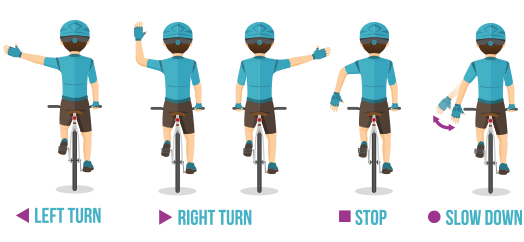


Unfortunately, the confusion among hand signals is compounded by the fact that there is not always agreement among what a hand signal means.įor example, some cyclists interpret the raised arm – which generally means an impending turn – as a stop sign.īefore riding in a group, the safest practice is to make sure that everyone riding agrees on what hand signals you will be using during the ride and what they mean. However, the majority of the hand signals described in this guide are recognized only by cyclists.Ĭritically, that includes signals like raising your left arm to turn right or moving your hand up and down to signal slowing down – signals that you will often use to signal to cars behind you.įurthermore, while the hand signals described here are the most frequently used signals among cyclists, there are innumerable additional signals found in specific regions or even among specific cycling clubs. Doing so is perfectly acceptable, but people need to remember that it is perfectly fine to signal with your left hand if you wish. People often make the mistake of only signaling with their right hand, and this is a very dangerous thing to do. The hand signals that speak for themselves – such as sticking your left arm out to signal a left turn, or putting an open palm behind you to indicate a stop – are generally recognized around the world by both cyclists and drivers. The most common hand signals for driving are the right turn signal and the left turn signal. Unfortunately, “universal” bicycle hand signals are anything but.


 0 kommentar(er)
0 kommentar(er)
